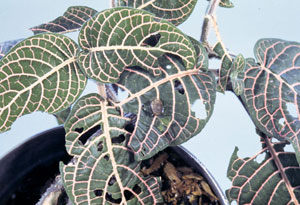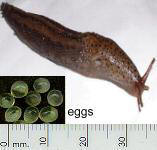
A pest that is difficult to eradicate are snails and slugs. Anyone who has ever grown vegetables in the vegetable garden knows what damage these animals can do. During daytime snails are hiding in dark and damp places. At nighttime day go out for feeding. They come especially for greenhouses because the conditions there are better than in a living room. Because there are always doors or windows open in the summertime it's easy for them to get into a greenhouse. In the garden there are also usually much the snails, just look at your Hostas or Delphiniums. The many holes in the leaves will tell you enough.

In the greenhouse snails can stay a pest throughout the year. The temperature and humidity remain ideal. The damage caused is usually at the roots or softer (young) leaves and flowers and can be enormous. In one night, a large snail can eat away all the roots and flowers of one of your precious plants. It can take some time before the plant recovers.

Snails lay their eggs in the soil (or bark) or in cavities of egg the bark which the plants are tied to. After 14 days the eggs hatch. The young snails remain still in groups together. Once adult, snails can live for more than a year.

Manual and precautions:
After spraying or mists snails soon are to emerge. They are then easy to remove by hand.
When it gets dark snails certainly come forth. It is recommended to walk around with a flashlight once a week after dark. You certainly will get results. If you notice at daytime feeding marks and there are still some good roots left, the snail certainly will return to eat the rest of it the same evening. He will remains in the neighborhood. Also indications of snails are slime trails nearby.
Ancient remedies as beer potatoes lay also deliver results.
Chemical control:
Slug pellets have been on the market for many years. Some good examples of pellets are: